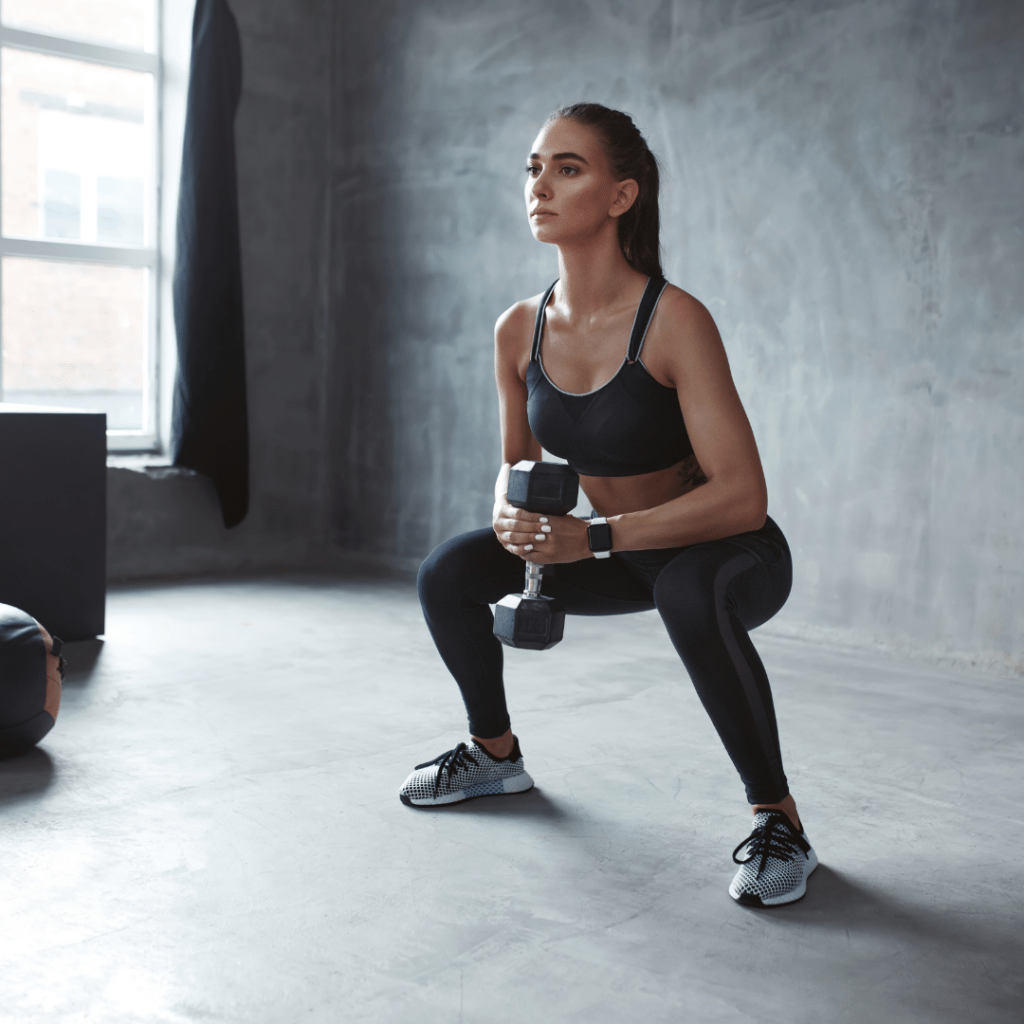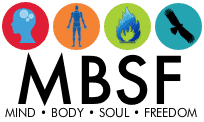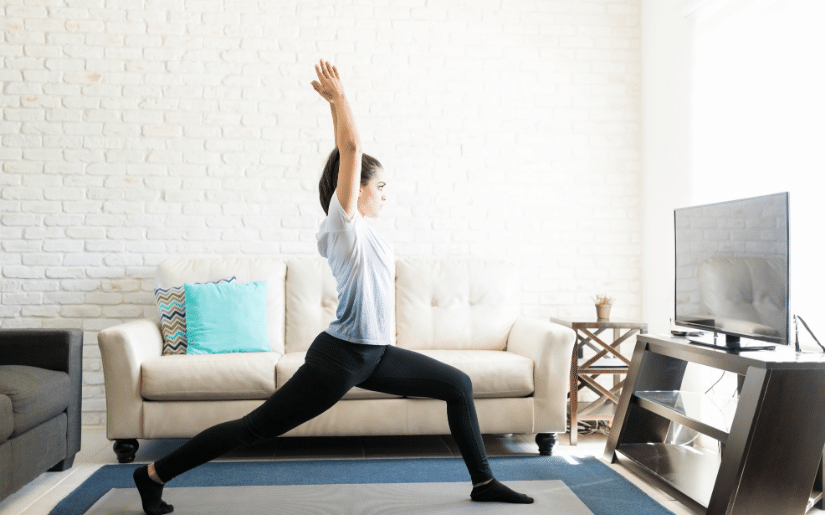What is functional movement training? What does it mean to train movements, not muscles… and why would you want to?
In essence, a motion-based exercise program revolves around training your body for how it was designed to move… resulting in more calories burned and more muscles worked in a shorter amount of time.
Training one muscle or body part at a time is ideal if you’re going for the Arnold Schwarzenegger look. But, when you want more of a lean, fit, and toned physique, functional movement training makes a lot more sense.
Are you wondering what’s the “right way to exercise” to burn calories and fat and build lean muscle? You’re not alone! Here’s what you need to know about functional movement exercises and why you should train movements not muscles to get lean, toned, and fit.
Why train movements not muscles?

When you train movements not muscles, you’re training multiple muscle groups at the same time. It’s all about building strength holistically by forcing your muscles to work together.
Not only does functional movement training burn more calories, but it also results in better muscle tone, enhanced coordination, and improved neuromuscular control.
“Functional fitness exercises train your muscles to work together and prepare them for daily tasks by simulating common movements you might do at home, at work or in sports. While using various muscles in the upper and lower body at the same time, functional fitness exercises also emphasize core stability.”
–Experts at the Mayo Clinic
In short, the exercises mirror the way your body moves naturally, which helps you move better and tones the muscles you use most often. When you train your muscles to work the way they do when you perform daily activities, you prepare your body to excel in a variety of common tasks.
When you think about it, muscles work in cooperating groups or systems. They rarely work on their own, so why would you train one muscle at a time?
There are seven fundamental, or primal, movement patterns we use every day:
- Push
- Pull
- Squat
- Hinge
- Rotate
- Lunge
- Gait (running/jogging/walking)
Training to support those movements, rather than simply strengthening individual muscles, makes more sense- not only for performing everyday activities but also for athletic performance.
And, it’s not just about losing weight or getting fit. Those who want to maintain balance and mobility into their senior years will see tremendous benefits from functional movement training.
Why Traditional Weightlifting Isn’t the Best Strategy

Here’s why old-school, single body part strength training isn’t the best strategy for achieving a lean, toned, fit physique.
- Restricts your range of motion.
- Tightens and shortens the muscles, instead of making them long and lean.
- Often leads to muscular imbalances, which can cause chronic pain and be difficult to correct.
- Doesn’t strengthen key stabilizer muscles.
- Doesn’t mimic the movements used in everyday activities.
These drawbacks of traditional strength training are all major obstacles if your goal is to be more physically fit and not just build huge biceps.
The Benefits of Functional Movement Training

When you train movements not muscles, your body becomes physically fit as a whole, allowing you to reach your goal of achieving a lean, toned physique. But the benefits don’t end there.
Here are some additional benefits of training movements, instead of muscles:
Lower Risk of Injury
Some of the most common workout injuries are caused by weak core muscles, muscle imbalances, and poor neuromuscular control. Functional movement training addresses all of those issues and lowers your risk of workout-related injuries.
Functional training exercises engage your core, correcting core weakness, and strengthening your stability muscles. They also strengthen those deep core muscles in your stomach that protect the spine from overextending and excessive twisting.
When you train movements not muscles, you’re also addressing muscular imbalances and building a strong foundation. Since the motions require balance and smooth transitions, they also improve neuromuscular control.
On the other hand, with traditional strength training, the goal is to build muscle volume, which greatly increases asymmetries- definitely not what you’re going for if lean and fit are your top fitness goals.
These things are important to keep in mind if you’re new to strength training and want to start out right by building a strong foundation and reducing injury risk.
Enhanced Mental and Physical Performance
Functional movement training can also enhance your performance- both in and out of the gym. That’s because functional training transfers to real-life movements, while traditional strength training is all about movements you normally only perform when you’re working out.
For example, no matter how many knee extensions you do, they won’t help you get off the couch like a squat can. And, even you’re already in decent shape, functional movements can continue to improve your flexibility and strength.
An interesting study also showed that functional movements increase mental stimulation, leading to improved cognitive ability and mental performance. That’s because functional movements incorporate stability, mobility, and balance challenges, rather than just contracting muscles. They force your brain to focus and adapt to each new movement pattern.
Improved Fat Burning
Training movements, not muscles burns more fat produces a more lean, toned body. Gymnasts and dancers who do only bodyweight exercises often carry very little, if any, body fat, which proves that functional movement training is a highly effective way to burn fat.
What makes functional movements so effective for getting lean? Mainly because they are compound movements that use many different muscle groups at once. This results in more lean muscle, which burns more fat and uses more muscle fibers during your workout.
This effect is called afterburn or excess post oxygen consumption (EPOC). Short, intense, full-body workouts have been shown to burn more calories in less time than longer, low-intensity workouts. For example, sprinting is much more effective than jogging for weight loss.
Exercises That Train Movements Not Muscles

The best functional movement exercises work the entire body and engage your core/stability muscles. Here are several exercises that train movements not muscles in a functional movement training regimen. Use them in combination to achieve a full-body workout.
- Squats: On any given day, you’ll probably use a squatting movement to get in and out of the car or sit on a chair many times. Doing squats works your lower body in general, especially the quadriceps, knees, ankles, and hips, making everyday activities easier.
- Jump Squats: Jump squats train the lower body and core muscles that we use every day for any number of activities.
- Planks and Pushups: Planks and pushups work the upper body, core, glutes, and even the lower body. They’re almost like an entire functional movement workout all by themselves.
- Deadlifts: Deadlifts require balance and use the hinge motion. That means they work your core and stability muscles, as well as your shoulders, legs, and glutes.
- Lunges: Lunges are kind of like a traveling squat. They’re an excellent functional movement exercise because they require balance and control to work your core, while also working your lower body. Add a waist rotation to further improve core stability and balance.
- Pull-Ups: Pull-ups work the biceps, upper back, middle back, and lats. They’re an important functional movement exercise because being able to hoist your own bodyweight is essential for everyday activities and strengthening your grip.
- Farmer’s Walk: The Farmer’s Walk works your calves, hamstrings, quads, shoulders, and improves your grip strength. To do it, simply walk with a heavy kettlebell or dumbbell in each hand, engaging your core and keeping your chest and shoulders elevated. There are lots of variations of the Farmer’s Walk you can do to bring in additional muscle groups, to.
- Sit-Ups with a Twist: The twisting motion is a major part of daily lives, so training it is important. Incorporating a twist into your sit-up does wonders for building core stability and strength.
Check out our post on calisthenics and body weight resistance training for more exercises you can incorporate into a functional fitness regimen.
Wrapping Things Up
Now that you know why and how to train movements not muscles, you can create your own functional movement training program. While you could stick to the basics outlined above, consider adding in other movement exercises like Hanging Leg Circles, Overhead Rows, and Single Leg Squats to add variety to your workouts.
Focusing on movements instead of muscles is the basis for a solid strength training routine that’s ideal for lean, toned muscles and excellent physical fitness.

